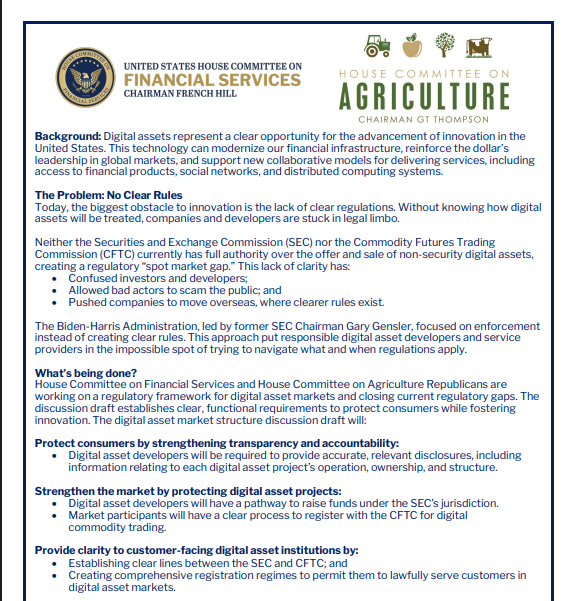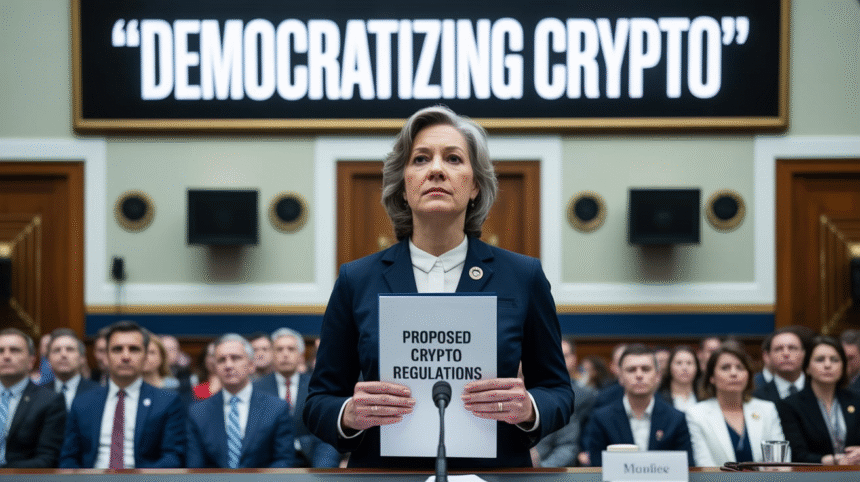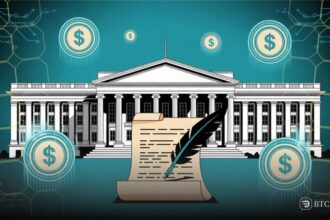On May 5, 2025, the House Republican leadership presented their Digital Asset Market Structure Discussion Draft as an intense regulatory approach for digital assets. Representatives Glenn Thompson and French Hill guided these efforts by revising the previous Financial Innovation and Technology for the 21st Century Act (FIT21).
The draft aims to open digital markets by decreasing crypto company control levels and establishing accessible conditions for new participants in trading platforms.

Key redefinitions and regulatory changes
One significant change is the redefinition of an “affiliated person.” The document introduces revised definitions that establish any individual with more than 1% of digital commodity ownership as an affiliated person. By restricting control to big holders, the proposal works towards decentralization.
According to the new bill, a “mature blockchain system” must now exist without dependency on any specific controlling entity. Blockchains must mature before the Securities and Exchange Commission (SEC) becomes their primary supervising authority.
One significant development is the deployment of decentralized finance (DeFi) protocols. The exemption for self-directed financial platforms from digital commodity broker or dealer registrations creates less regulatory resistance for decentralized platforms.
The draft legislation establishes digital commodities as “investment contract assets” while eliminating traditional securities laws. Secondary token exchanges are not considered securities unless they directly impact profits or business ownership stakes.
Clarity, dual oversight, and potential impact on crypto
The draft authorizes two registration systems, allowing companies to obtain funds through SEC oversight and CFTC commodity approval. The CFTC and SEC must also establish a shared delisting process for non-compliant crypto assets.
According to its advocates, the draft system with dual registration protocols makes market entry easier for small organizations. Moreover, the proposal creates a two-tiered structure to help innovative product launches and lower startup entry barriers.
The U.S., through the Digital Asset Market Structure Discussion Draft, introduces a regulatory framework for crypto assets.
It outlines clear measures that support digital finance by promoting decentralization and reducing stakeholder control. The regulators continue to enhance strategy enforcement by working with innovation groups and marketplace participants.







